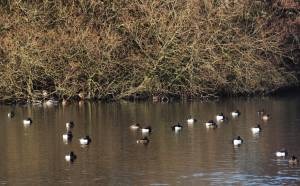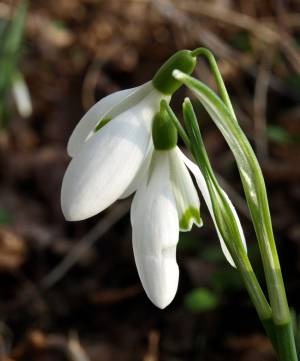Dr Phil Smith’s Wildlife Notes
January 2008
Inclement weather meant few opportunities to get out into the field this month. Instead, I spent some time updating the Inventory of Vascular Plants for the Sefton Coast. This is a sort of “Domesday Book” of all the higher plants (flowering plants, conifers and ferns) identified on the Sefton Coast as a whole and in the sand-dune system since people began to write down their discoveries about 200 years ago. You might think that all the plants would have been found by now, but actually new ones are still being added most years; for example as many as 25 in 2005/06 and 18 more in 2007. Research for the New Flora of South Lancashire has also contributed historical records of about 50 plants previously overlooked. The latest Inventory lists 1265 different plants, 1129 of which were recorded in the duneland. Around two-thirds of them are native to Britain, the rest having been introduced, including a growing number of garden-escapes. The good news is that, unlike most of the countryside, we seem to be gaining more flowers than we are losing; indeed, only about 50 kinds have become extinct here since records began. Certainly, our coast is exceptionally rich botanically, perhaps the richest of its kind in Britain. It is difficult to make comparisons because few other areas have been studied in such detail. But, for example, Newborough Warren in Anglesey, a dune area about the same size as ours, has around 600 vascular plants, while Braunton Burrows in Devon is said to support about 500.
Sands Lake at Ainsdale is usually worth a visit at this time of year. The wintering flock of Tufted Duck peaked at 144 on 9th January after a gale, when the 39 Shovelers present was probably a record count. Two Water Rails were occasionally seen or more usually heard squealing away in the reeds, but the best bird was a Yellow-legged Gull on the 1st January. This is the western Mediterranean version of our Herring Gull, distinguishing features including its dark mantle colour and yellowish legs. It has been reported twice on the beach since then. As usual, numbers of Coot on Southport Marine Lake began to decline from their December peak, with 1100 on 5th and 860 on 9th January.

Marshside was good value, with regular sightings of raptors such as Hen Harrier, Merlin, Peregrine and even Marsh Harrier, while Little Egrets were ever present. The much rarer Great White Egret was reported a couple of times and three Greenland Whitefronts were spotted with the regular Pink-footed Geese.
Martin Mere had its usual spectacular flock of wintering Whooper Swans – peaking at around 1600, with Buzzards and other raptors usually on view. I counted an impressive number of 775 Shelduck there on 12th January.
Finding Snowdrops, already in flower before the end of the month, whets the appetite for riches yet to come. I noticed Common Snowdrop (Galanthus nivalis) and much rarer, broader-leaved Green Snowdrop (G. woronowii) at Hesketh Road, Marshside on 30th January. Many different spring-flowering bulbs can be found in the next few months on patches of waste ground and on the inner parts of the sand-dunes, where they have escaped from gardens.

